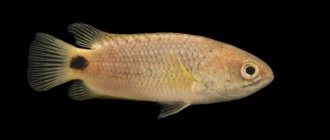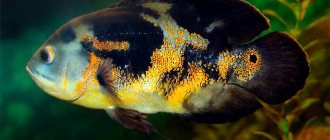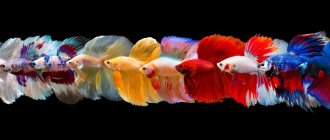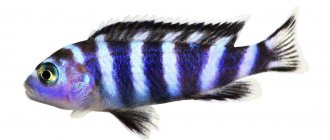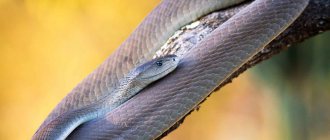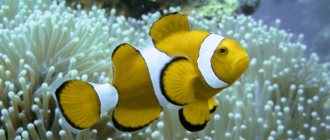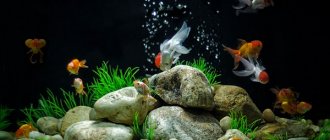The snake fish, or as it is also called - Kalamoicht Calabar, is an unusual underwater inhabitant. This ancient fish has a serpentine appearance and elegance, moves differently than other fish, is more active at night and needs shelter. And although these unique individuals have adapted well to life in captivity, they have not gained widespread popularity among aquarists. Is it difficult to keep Kalamoichta Calabar at home, and what should future owners know about these pets?
basic information
Snakefish are not often found in private aquariums. Only a small number of enthusiasts are engaged in their breeding. However, individuals are often found in pet stores. If you want to purchase such a pet or its close relative, the Nile polyfeather, there will be absolutely no difficulties.
It is noteworthy that the deeper the knowledge of an aquarium hobbyist in zoology, the higher his interest in kalamoichts. Snake fish belong to the class of ray-finned fish, a subclass of cartilaginous fish from the polyfinned family.
Reproduction
Kalamoicht Calabar reaches sexual maturity by 2 years, but breeding it in an aquarium is impossible. This is due to many obstacles, in particular the need for hormonal stimulation. This is not practiced at home. All representatives available for sale are caught in the wild.
| Females | Males |
|
|
Sexual differences in kalamoichts are weakly expressed. Only by looking closely can you determine the sex: the male has more rays on the dorsal fin (12-14). But breeding at home is practically impossible: calamoikhtas require complex hormonal nutrition in order to reproduce in captivity.
Appearance description
Kalamoicht calabar has a very unusual appearance, very much reminiscent of a scaly reptile, but there are also signs characteristic of fish:
- the dorsal fin of individuals consists of hard rays, which can be from 7 to 13 pieces; there are no soft rays;
- anal fin - includes from 9 to 14 soft rays, has no hard rays;
- spine - formed from more than a hundred (more precisely 110-113) vertebrae;
- the body is long, because of it the individuals resemble eels;
- in nature, the size of individuals reaches 35-37 cm;
- in the head of the kalamoichta there is no axillary bone, it is slightly flat;
- the eyes are located on the sides;
- the dorsal fin is a series of individual spines supporting rays and membrane septa;
- the body is covered with ganoid scales, the shape of which is diamond-shaped;
- the color of the snake fish is beautiful, but discreet, in brown-olive tones on the back and whitish on the belly;
- The pectoral fins are decorated with large black spots.
Habitat in nature
The aquarium snake can be found in nature in the waters of West Africa: Nigeria, Congo, Angola.
In home aquariums live specimens caught from natural reservoirs, which can grow up to 40 cm in length and live 9-11 years in captivity. The habitat of Calamoikhta Calabar is Western Africa, Nigeria, Congo, Angola, Cameroon. They settle in stagnant and slowly flowing waters deprived of oxygen. Most of the time they are at the bottom, emerging to the surface to take a breath of fresh air. This behavior is due to the presence of lungs in the Kalamoichta Calabar, which allows them to stay on land for a short time, near a reservoir.
If in aquarium conditions Kalamoicht Calabar does not grow more than 50 cm, then in nature there are meter-long individuals. Under favorable circumstances they live up to 9 years.
Habitat
These unusual creatures are found in the waters of Nigeria and the Congo, they inhabit slow-moving rivers, ponds and lakes with fresh or brackish water. More often than not, the snakefish biotope turns out to be overgrown with reeds. They move in an original way along the bottom surface - snake-like or sideways.
Calamoikhtas are nocturnal predators. In nature, they eat worms and insects, and small animals can also be included in their diet. Individuals of this species do not have very good eyesight, so they look for prey using their sense of smell.
Calabar calamoicht: dangerous amphibian or original fish?
The Calabar kalamoicht is considered one of the most unusual fish, not only in appearance, but also in its habits.
- This is a calm, non-aggressive creature that can easily get along with equally peaceful neighbors. The only condition: the fish should not be too small. Through the millennia, Kalamoicht has not lost the desire to hunt and can eat small fish, at least for sport.
- The kalamoichts actively use their ability to climb into any, even the narrowest, crack. They rarely get stuck anywhere, however, after a global cleaning of the aquarium with rearrangement, it is better to first monitor how the fish feel in the new design. And, of course, a tight lid is a must!
- Calamoichtas love to lie on the aquarium ties. If the snake fish is not visible near the front window, where it spends most of its time, look under the cover. Most likely, she lies there. Or in the shade of aquarium plants, resting from the abundance of light.
- The aquarium dragon fish gets used to the owner, and when he sees him, he shows joy by active movements along the aquarium.
- The greatest activity of kalamoichts occurs at night. But during the day they are also quite active, resting for a short time in the shade near the bottom.
We suggest you read: Natural food recipes for cats
Kalamoikhts get along quite successfully with large peaceful fish: thorns, angelfish, some large cyprinids and other fish of a similar size. Predators are also suitable as neighbors: parrots, severums, tilapias, astronotuses, if they do not hunt for calamoichts.
As for intraspecific proximity, dragon fish are not territorial, so several individuals easily coexist in one aquarium. The kalamoichta can also be successfully kept without relatives.
The Calabar calabar fish (Erpetoichthys calabaricus), or as it is also called the snake fish, is an extremely unusual-looking, graceful and ancient fish. It is interesting to watch the kalamoikht, it is quite easy to keep, but it is important to remember that it must be kept with medium- and large-sized fish.
The snake fish will hunt the rest. Although they are predominantly nocturnal, with regular feeding during the day they become accustomed and become more active during the day. But at the same time, kalamoichts are rather timid fish, even shy.
It is important to create shelters for them in which they can hide during the day and hide in case of persecution.
Habitat in nature
Kalamoicht calabar lives in western Africa, in the waters of Nigeria and Congo, Angola, Cameroon. In nature, it lives in stagnant or slow-flowing water, with a low oxygen content, to which the calamochite has adapted and can literally stick its head out of the water to breathe atmospheric oxygen.
The fish has developed lungs, which allow it to even live on land for some time, subject to high air humidity. The snake fish is an ancient creature that can even be called a fossil. In nature they can grow up to 90 cm in length, in an aquarium they are usually much smaller - about 30-40 cm in length.
Life expectancy is up to 8 years.
Among aquarists there are lovers of exotics and everything unusual. They are not touched by ordinary fluttering fish with bright fins and veil-like tails. Give them something unusual and even shocking. For such people - the calamoikht fish (erpetoichthys calabaricus).
The brightness of emotions is guaranteed.
During your first acquaintance, it may seem that this creature has no resemblance to fish. This is a real snake, with a long body covered with rough scales, a triangular small head and a typical greenish-gray-yellow coloration. Despite this, biological characteristics confirm that it is a fish.
Its peculiarity is the presence of gills and lungs at the same time. A kind of natural amphibian, capable of living fully under water and for a certain time on its surface. Reservoirs with dirty, oxygen-poor water are not scary.
It is in such cases that, putting her head above the surface of the water, she breathes oxygen from the air and this suits her quite well.
At the slightest danger, he prefers to sit out in the thickets and wait for a more opportune moment to emerge.
In addition, by nature he is destined for a nocturnal lifestyle, although life in an aquarium has left a certain imprint: during daytime feedings he is not able to stay away.
Ichthyologists have reason to believe that this is one of the most ancient variants of fossil fish, about which fairy tales and legends are written. The rudimentary structure of the respiratory and gastrointestinal systems is a clear confirmation of this. All the more interesting and original is such an individual, familiar to many, but completely unknown to anyone.
A descendant of the fauna of West Africa, the Calabar calamoicht requires attention to its content in the aquarium. The water should be neutral or slightly acidic. The average pH is within 7.0. Her temperature is not lower than 24o. Heating by two to three degrees does not make much difference.
In nature, it is often noted to live in stagnant bodies of water with brackish water. However, the salt concentration should not exceed 1.005, otherwise the behavior of the fish changes for the worse: it gets nervous, changes color, and hides in stone piles.
The presence of artificial fortifications and thickets in the aquarium is welcome. His favorite place to stay is not open areas of water, but rather mysterious labyrinths. Interest in what is happening around the aquarium is also possible.
Particular attention is paid to the settlement of neighbors. Small peace-loving fish cannot be housed at the same time as erpetoichthys calabaricus. They run the risk of being eaten on the first night. Guppies, barbs, fry of swordtails and mollies, small species of catfish and others are not suitable. Suitable neighbors will be cichlids (far from small variants), large gouramis, and noble veil-tails.
Such an unusual snake fish needs a lot of water - at least 200 liters per individual. But even in such conditions it will not grow to its natural size: aquarium options usually do not exceed 60 cm.
- The kalamoichta has poor eyesight. The fish don't have to rely on it. But nature rewarded him with a well-developed sense of smell. He even recognizes food by smell, which leads to him being late for meals. It is good when there are fish in the aquarium that prefer to eat in the upper and middle layers of the water. Then the particles that have settled to the bottom will be found and eaten by him. A plus is developed tactile functions. To perform them there are special short but sensitive mustaches.
- Like a snake, the predator prefers live food. He will happily eat minced meat or fish, chopped shrimp or squid. You can feed them worms or bloodworms. He will not miss the slightest opportunity to swallow small fish or fry. They also do not refuse specialized dry food, especially those intended for multi-feathered animals, to which they belong according to the classification. It should be noted that its large mouth has teeth, so you should not pick up the specimen. In addition, there are from 8 to 15 spines on the body, located closer to the tail on the dorsal half. These are protective organs and you should beware of them.
- There is no need to worry if your pet crawls out into bright light and sits under a bright electric lamp. He loves to bask in the warm rays, even from electrical appliances.
We invite you to familiarize yourself with: Crested chickens of the TOP-10 breed with descriptions, photos and videos
So, the aquarium snake fish is quite peaceful, but its predatory habits were passed on from its ancestors. It is preferable to keep them in pairs or alone in a species aquarium. It will not ignore small fish (catfish, guppies, neons, barbs), which are associated with prey and are easily swallowed by it. Therefore, it is better to settle with representatives of medium or large size.
Good compatibility with the following types:
- cichlids;
- characinki;
- smeltweed;
- synodontis.
Specimens that are too mobile are also undesirable in the neighborhood, since the passive Kalamoicht Calabar will not be able to repel their attacks and defend food.
Peculiarities of breathing of snake fish
Kalamoicht is an amphibious fish with paired pulmonary sacs - formations from the swim bladder. Their lumen is located in the digestive canal. Studies of these fish have shown that they use gills, lung sacs and skin to breathe. To find out, the individuals were placed in special chambers. Oxygen enters the body as follows:
- 40% - through the pulmonary sacs;
- by 28% - through the organs of water respiration - gills;
- by 32% - through the skin.
Nature made sure that calamoikhtas not only lived in water, but could also inhale atmospheric air and even spend some time on land. The larvae and juveniles have external gills, which make individuals resemble juvenile salamanders.
Maintenance and care
This is one of the most unusual aquarium fish. For a long time, its scientific name was Calamoichthys calabaricus, hence the generally accepted everyday name - calamoichthys. Kalamoikhta is also called reedfish (reed fish), snakefish (snake fish), ropefish (rope fish, rope fish).
most interesting aquarium fish.Maintenance, compatibility and feeding of kalamoichta |
Surely every aquarist wanted to keep something unusual that would attract the attention of fellow hobbyists, relatives and guests. And so that, in addition, there is no need to make a black hole in the budget by purchasing a 500 liter aquarium and the corresponding equipment.
And then it’s not always possible to spend half the time on care. But there is a way out! Meet the Calabar calamoicht, originally from West Africa, or, as it is also called, the snake fish (although our new pet has nothing to do with snakes, except for its external resemblance).
Gracefully gliding through the water, or slyly peeking out from under an anubias bush, the calamoikht will add charm to any aquarium.
| Photo 1. The Calabar calamoicht in the aquarium does not lead a very secretive lifestyle. Spends a lot of time at the front window. |
Type: Chordata (Chordata) Class: Ray-finned fish (Actinopterygii) Order: Polypteriformes Family: Polypteridae Genus: Erpetoichthys Species: Erpetoichthys calabaricus
What is this ancient creature that has survived to this day? The body is long, serpentine, reaching 40 cm in length and 2 cm in thickness. Graceful diamond-shaped scales (scientifically called cosmoid-ganoid - a sign of very ancient origin) enhance the resemblance to a snake.
At the tip of the muzzle there are two outgrowths - organs of the finest sense of touch. Just behind the head are two small pectoral fins. The fish has a very beautiful olive color, the belly is yellowish-orange. The dorsal fin is represented by separate rays.
And compare them, for example, with the size of the eyes of the same angelfish or clown loach - fish that are accustomed to relying on their vision.
| Photo 2. One of the oldest living fish is the Calabar calabaricus (Erpetoichthys calabaricus). Paleontologists have not yet been able to deduce the “pedigree” of the Polypteriformes order, but they believe that the ancestors of Calamoikhts and Polypteri lived in the Triassic period more than 200 million years ago. |
Further in the text, in order to avoid tautology, I will use the words “fish snake” or “snake fish”, although I emphasize that the kalamoicht has nothing to do with reptiles in general, or snakes in particular. The homeland of the kalamoicht is West Africa, where it lives in the waters of the rivers of Nigeria, Congo, Benin, Equatorial Guinea and Cameroon. Prefers slow-moving or almost stagnant water.
An aquarium of 100 liters or more, densely planted with plants, or equipped with many shelters (or both together) is suitable for maintenance. Moreover, even if the aquarium looks a little “cluttered”, this is even better. Calabarians need shelters, so they feel much more confident and behave more boldly. pH range from 6.5 to 8, comfortable temperature 25-27°C.
I don’t think it’s worth talking about properly organized filtration; this is an axiom for any type of fish. But aeration is not necessary for kalamoichtas (provided they are kept in a species aquarium, or if, for example, labyrinths act as neighbors). Due to the peculiarities of its anatomical structure, it is able to swallow atmospheric air and absorb oxygen from it.
This is easy to notice - periodically the fish snake floats to the surface and grabs a portion of air with its mouth, after which it sinks to the bottom again. Kalamoikht needs free access to the surface; if it is not there, the fish will die from asphyxia, since gill breathing alone is insufficient. In general, this is a classic bottom dweller.
It must be said that calamoikhtas do not tolerate moving from one aquarium to another very well; they can refuse food for several days or even weeks (however, without much harm to themselves). In my case, the fish snake began to eat on the third day, but I also attribute this to the fact that he was offered food that was unusual and inconvenient for him. Many hiding places will help your new pet get comfortable.
A sure sign that adaptation has taken place and the new inhabitant has found its niche in your aquarium is that the kalamoicht chooses one or two permanent shelters, where it spends a significant part of its time. For me, for example, it turned out to be a large Anubias bush right next to the front window.
| Photo 3. Calamoichtas love dense thickets of plants. If the aquarium is properly designed, they do not hesitate to stay near the front glass for a long time. |
As a rule, there are no problems with snake fish compatibility. It is important to observe only two points. Firstly, there should be no large aggressive cichlids that might mistake the kalamoichta for a very fatty worm and try to bite it. Secondly, neighbors with a guarantee should not crawl into his mouth - otherwise the Calabarian will start hunting them at night.
Moreover, once having embarked on the path of night robbery, the kalamoicht will never turn away from it. I did not take this moment into account at the time, and my fish snake dragged over a dozen more small Sumatran barbs.
And he didn’t choke... The kalamoicht itself does not show aggression towards those fish that do not fit into its mouth, and is quite loyal, for example, to corydoras, clown loaches, and angelfish.
We suggest you read: Diseases of pigs: symptoms and treatment
However, he prefers to hunt for things that smell good and don’t fight back. If you give your fish pieces of squid or shrimp, then this is also suitable food for kalamoichta. Dry food, for example, tablets for bottom inhabitants, these unusual fish also sometimes eat, but this is rather an exception1).
The most important thing is to make sure that your fish snake gets food. This is especially true if the aquarium contains nimble and voracious fish. The fact is that when searching for food, the kalamoicht is guided by its excellent sense of smell and touch.
It can swim within half a centimeter of a huge fat bloodworm, but will not eat it until it encounters it with its “antennae.” And this is not stupidity at all - it is really difficult for the kalamoicht to find food when the smell comes from literally everywhere.
If you notice that your pet still doesn’t have enough food, you can use a special device for feeding bottom inhabitants. When kept in a species aquarium, you can feed calamoichts every other day, or when you notice that they have begun to look for food. The structure of the digestive tract is such that snake fish digest food for a long time.
| Video 1. Kalamoikhtas are very fond of bloodworms, which at first will be the main dish. In the future, the snake fish can be accustomed to other foods, including fairly large sinking granules. For example, dry food for axolotls from JBL is suitable. |
When purchasing an exotic pet, you need to pay attention to the color. It should be soft olive. Not gray, but olive. The covers should not have ulcers, erosions, or other damage (however, this applies to all purchased fish). Sex differences in kalamoichts are weakly expressed.
There is a version that sex can be determined by the number of rays of the dorsal fin - the male has 12-14, if there are 9-12 rays, then we have a female. In addition, the anal fin of the female is smaller than that of the male. Reproduction of calamoichts in an aquarium is the same unplowed field as the breeding of clown loaches, for example. Cases, if known, are literally isolated, without any detailed information.
It is stated that hormonal injections are necessary for breeding. Many sources say that the kalamoicht is active mainly in the dark. In fact, they are active during the day if they feel safe. This fish is not cowardly and willingly swims up to the front glass, letting you admire it.
Unlike bots or angelfish, it pays practically no attention to what is happening outside. I had a case when a cat sat down near the aquarium, and, seeing an unusual fish (the kalamoicht was lying peacefully under a bush), began drumming on the glass with its paw.
In complete darkness, daytime fish are disoriented, but the snake fish gains an advantage, and poor vision no longer plays any role here - the predator will search for prey using smell and touch. It is very interesting to watch the Calabar while feeding - the fish is looking for food, gradually narrowing the circles until it stumbles upon a tasty morsel.
Moreover, when looking for food, it can show a certain intelligence. One day I noticed that my kalamoicht was picking up particles of soil with its mouth (I have small pebbles) and putting them aside. He doesn’t dig, but rather takes it and puts it aside. Thoroughly intrigued, I began to observe. Soon a large bloodworm appeared in the formed hole, which was immediately eaten. I smelled it, even through a layer of soil! And he not only smelled it, but also figured out how to get it! In general, the pet is not only unusual, but also very interesting.
| Photo 4. The mouth of the kalamoichta. He uses it wisely! It can catch, or it can dig! That’s why this aquarium “snake” is interesting. |
Aquarium for snake fish
The snake fish is an exotic pet that is very easy to keep in a home tank. The owner must provide the pet with the following comfortable conditions:
- a spacious aquarium - with a volume of at least 100 liters, and since it is better to keep two individuals or even more, for a couple of calamoikhts you will need at least a 250-liter container, but it would be good if the tank was even larger;
- suitable soil - it is better to use soft sand, on which it is easier for individuals to move;
- mandatory home decor - it is important that it has dense vegetation and driftwood, which form secluded places and intricate transitions;
- lid - if the aquarium is not closed, then you can expect incredible escapes - these inhabitants are very playful and unpredictable;
- an aqueous environment with the following indicators: acidity 6.0-8.0, hardness – dH 5-19; temperature from 22° to 28°C;
- a filtration system is a necessary attribute for a kalamoichts’ home.
You need to change the water by 1/4 weekly, but you can do without aeration. Snake fish have an unusual structure of internal organs and have lungs, therefore, if necessary, individuals are able to breathe atmospheric air. Thanks to this ability, they tolerate a decrease in air concentration relatively easily. However, one should take into account the nuance that if the fish’s access to air is limited, it will drown.
These inhabitants not only have a snake-like appearance, but also some of the habits of these creatures, for example, they are able to squeeze even into tiny openings. Therefore, if you do not provide the tank with a cover glass or a reliable lid, there is no doubt that the individuals will scatter. You just need to ensure a flow of fresh air; there should be small ventilation holes in the lid.
Owners should also consider the following features:
- snake fish are not solitary fish, so it is better to have several individuals - from two to five;
- It is advisable to add a little sea salt to the water, which will have a positive effect on the condition of the inhabitants;
- It is easier for pets to adapt if they are given food in the dark and placed in an aquarium with conditions as close as possible to natural ones.
Features of behavior and content
Calabar kalamoichtas prefer to be active at night, and during the day they hide among snags and in other shelters. However, in aquariums they adapt and are shown during the daytime. They love to swim, so they need a large tank, at least 200 liters per couple.
We recommend reading
Astronotuses: care and maintenance
They love to burrow into the ground, and there is no need to prevent them. Place fine gravel without sharp edges or sand in the aquarium. Provide shelter. This is important, since the kalamoicht is a shy fish; it definitely needs to hide somewhere. Suitable algae include Anubias, Vallisneria, and Aponogeton.
Kalamoicht is a restless pet and can go for a walk, and seeps into the tiniest cracks. It can cover an impressive distance on the ground, so keep the aquarium tightly closed.
The fish lives on average 8-10 years.
Who do snake fish get along with?
When choosing a company for such original pets, you should immediately exclude small-sized inhabitants - they will consider individuals that fit into the mouth of snake fish only as food. You can house snakes:
- carp;
- characins;
- cichlids;
- soms;
- angelfish;
- tilapia;
- severums;
- synodontis.
But you can limit yourself to the inhabitants of only one species; calamoikhtas are not aggressive and non-territorial, they coexist perfectly with their fellows.
Water parameters and compatibility with other pets
Although the home of the kalamoichta is almost stagnant water, to keep it at home you need a good filter. The temperature must be maintained at 24-28 degrees, a drop to +22 is acceptable. The hardness index should not exceed 19 dH and fall below 5 dH. The fish also prefers slightly acidic or neutral water, so the optimal pH level is from 6 to 8. Kalamoicht is tolerant of a gradual decrease in acidity, but cannot tolerate sudden changes. If your pet suddenly turns pale, immediately make sure that the pH is normal.
In addition, ensure a weak current in the aquarium and monitor the salinity indicator, it should not exceed 1.005.
Choose large and medium-sized fish as neighbors for the snake fish. All small things like guppies, neons, barbs, and some catfish will be eaten.
Severums, synodontis, angelfish, tilapia, large catfish, cichlids, cyprinids, and characins are suitable for living together. Kalamoikhtas also get along with each other, since they do not share territory.
How do snake fish reproduce?
It is easy to identify a male ready for mating - his anal fin begins to swell and thicken. And if a couple swims in parallel, then offspring can be expected soon. The female lays eggs on the male's subcaudal fin, and he, in turn, fertilizes them. After this, the eggs settle on the ground and stick firmly to it. This process consists of several stages and lasts until all future offspring are at the bottom.
After 3 days, the larvae appear, and within 3 weeks they hang from the substrate. After 3 weeks, complete resorption of the embryonic organ occurs, and babies emerge, able to swim and eat food without assistance.
Snake fish are unusual pets that arouse interest with their unusual appearance, habits and behavior. They are an adornment to any collection - demanding, original, unique.
What and how to feed the “Chinese snake”
Snake-like fish like animal food, so the ideal option would be frozen or live food. For example:
- shrimps;
- shellfish;
- bloodworm;
- earthworms;
- tadpoles.
Some aquarists have difficulty with the fact that kalamoichts practically do not eat dry food and pellets. Only as a last resort does he not disdain them, and, naturally, this is not a suitable diet for him.
We recommend reading
About predatory aquarium fish
It is better to give food in the dark. The snake fish has very poor eyesight, although it has a sensitive sense of smell. She is slow, “thinks” for a long time before doing something. Because of this, if there are faster fish in the aquarium, they sometimes don’t get enough food. At night, the activity of most fish species decreases, and the kalamoicht will calmly eat. You can also place the snack right in front of your pet, waiting until the other fish have eaten their portion.
Food is given 3 times. For young fish – 5-6 times.
Photos of Calabar's kalamoichts
Description
Kalamoicht calabar is surprisingly similar to a snake: its long, round body has almost no fins. Only on the tail there is a small lobe, on the back there are rays of the dorsal fin (from nine to fourteen), and under the gills there are two neat pectoral fins, similar to ears. The main method of movement of the fish is similar to that of a snake: the body bends, and the kalamoicht moves forward by inertia.
What makes kalamoichts especially snake-like is their head. It is somewhat flat, there is no pointed nose, and the mouth is large and in a downward position. The eyes are located on the sides, they are round, black and small. The scales on the face create a snake-like pattern, and due to the shape of the jaws, the fish seems to be constantly smiling.
The main color of the small smooth scales is greenish-olive, yellower on the abdomen. The pectoral fins have one large black spot at the base. Along the entire body there is a barely visible mesh pattern, which is created by the edges of the scales.
The main color of the small smooth scales is greenish-olive, yellower on the abdomen. The pectoral fins have one large black spot at the base. Along the entire body there is a barely visible mesh pattern, which is created by the edges of the scales.
Conditions of detention
When kept in an aquarium, the kalamoicht will not require unimaginable conditions from its owner. Ease of care and cultivation is one of the main advantages of this fish.
This is an unpretentious aquarium resident who likes to hide in thick algae and stones
For this purpose, a container with a volume of 100 liters or more is suitable, the bottom of which will be covered with dense vegetation, where a cautious inhabitant of the aquatic depths can hide, feeling comfortable and confident. Fish in the form of a snake will like various aquarium shelters - castles, broken pots, hollow logs, shells. Maintenance and care of Kalamoicht Calabar:
- Water temperature varying between 22−29°C.
- pH level from 5.5 to 8.
- Water hardness from 5 to 15.
- Properly organized filtration, because snake-like fish cannot tolerate dirty water.
- The presence of any lighting, since the kalamoicht loves to bask near artificial light sources.
The kalamoicht needs clean, oxygenated water, a sufficient amount of light and a hermetically sealed aquarium.
Separately , it is worth taking care of aeration , the presence of which is not necessary provided that the aquarium is inhabited only by fish of this species or its neighbors are labyrinthine aquatic inhabitants. If the neighborhood is represented by other fish, then they may need aeration, since the fish snake is able to swallow air on its own, periodically swimming to the surface of the water.
Another important aspect of keeping Kalamoichta Calabar is a tightly closed aquarium.
Despite its calm disposition, this representative of the ray-finned species is prone to escape; if the slightest gap is left, the aquarium snake will simply run away and die, since it is unable to live for a long time without water.
Content
Aquariums larger than 200 liters with a wide bottom are suitable for keeping kalamoichta. Anyone who likes to dance and frolic will feel bad in cramped spaces.
Filtration is mandatory, but aeration is not, because this foreigner is an amphibian: its lungs are well developed and it breathes atmospheric air. It requires an air cushion on the surface. The aquarium containing this fish must be tightly closed. It can literally seep into any crack. Having escaped to freedom, the kalamoicht dies, although it breathes oxygen.
The lighting may not be very bright, but it must be: he loves to constantly bask under the lamp.
One of the features of the content is the installation of a house. Without shelter, the fish develops a stressful and painful state. Pots or castles are placed at the bottom (emphasis on the first syllable). Algae with wide leaves can serve as a shelter. Sand is poured onto the bottom.
They have a hard time with moving and get sick when adapting.
